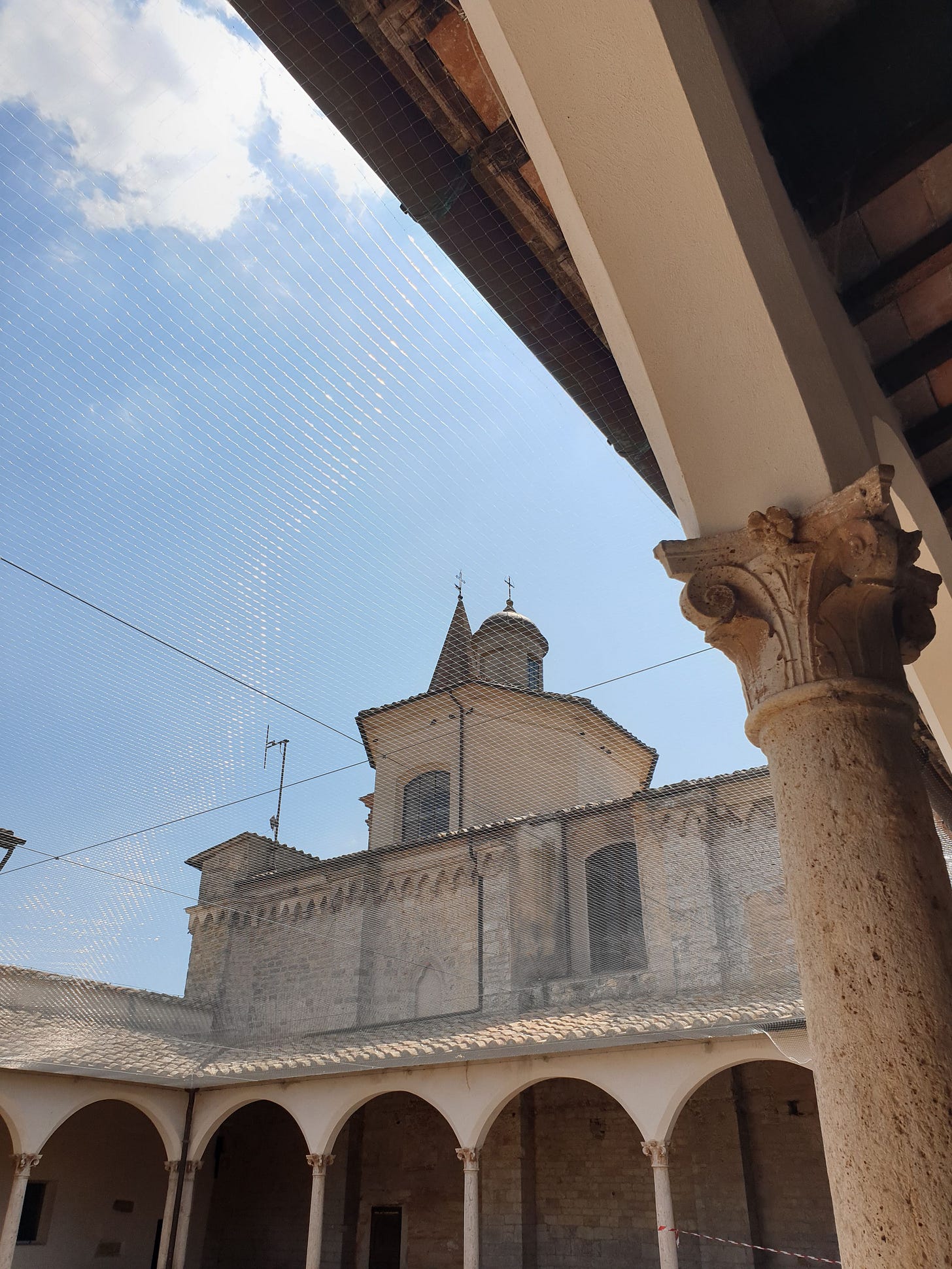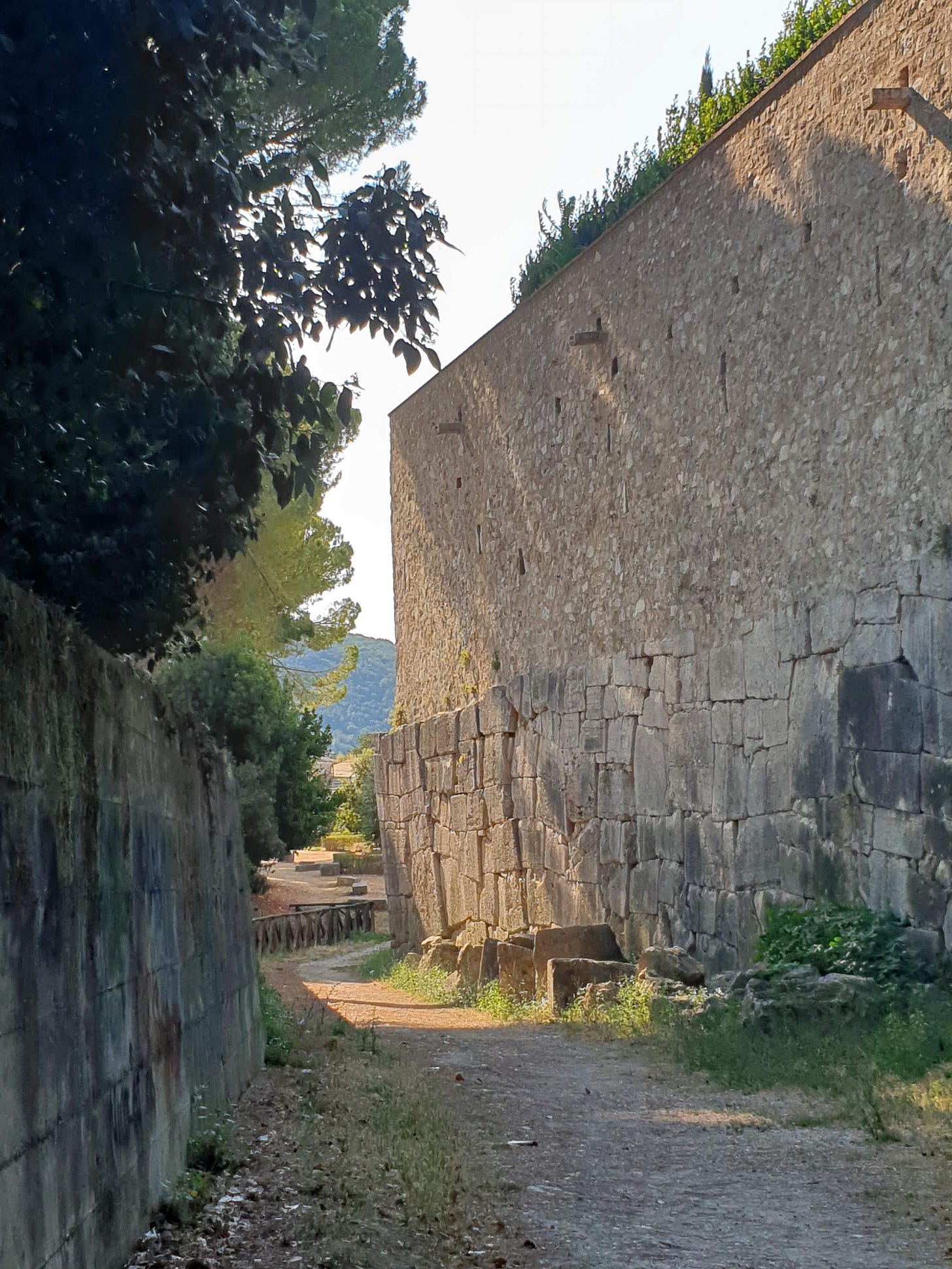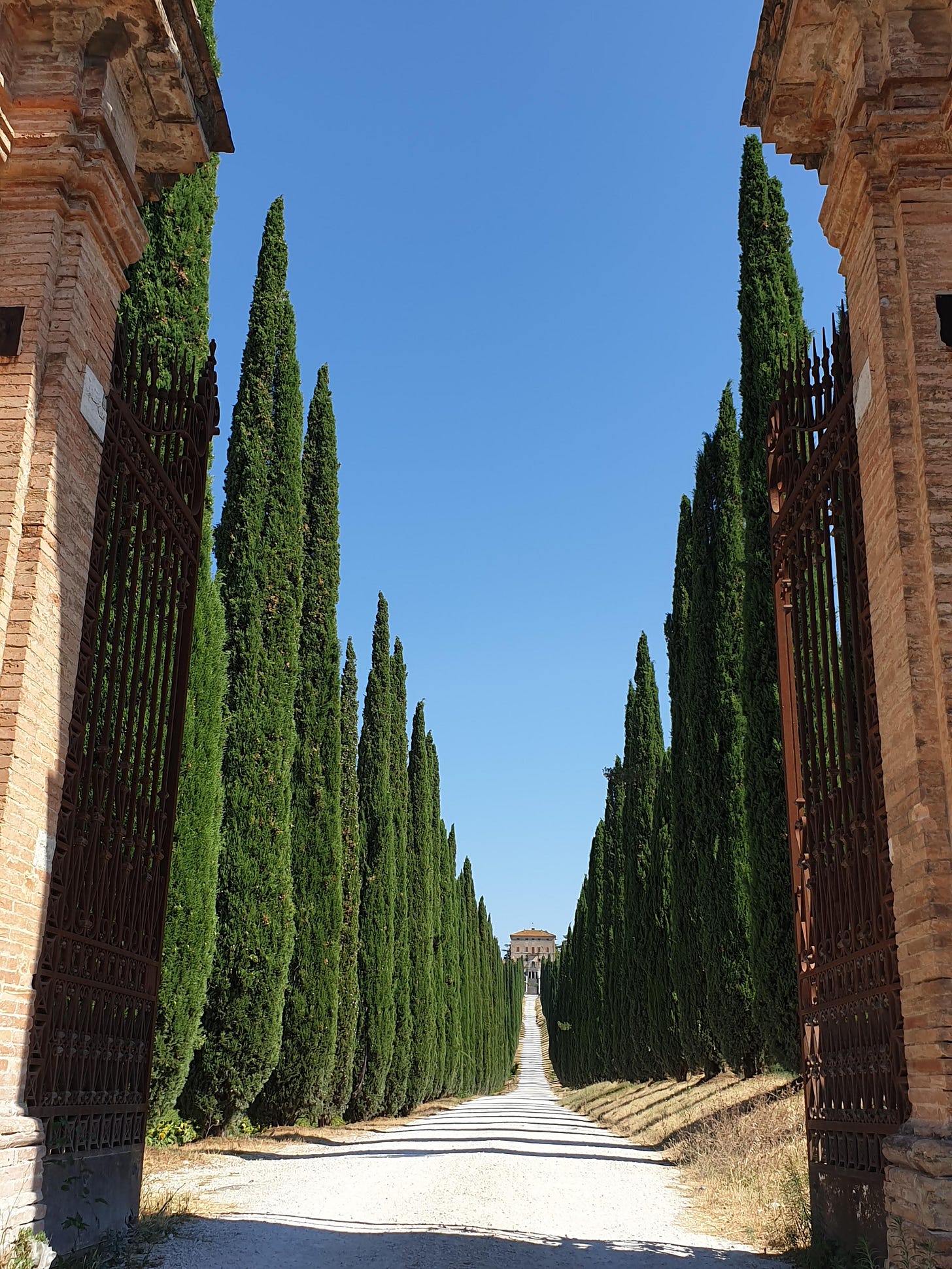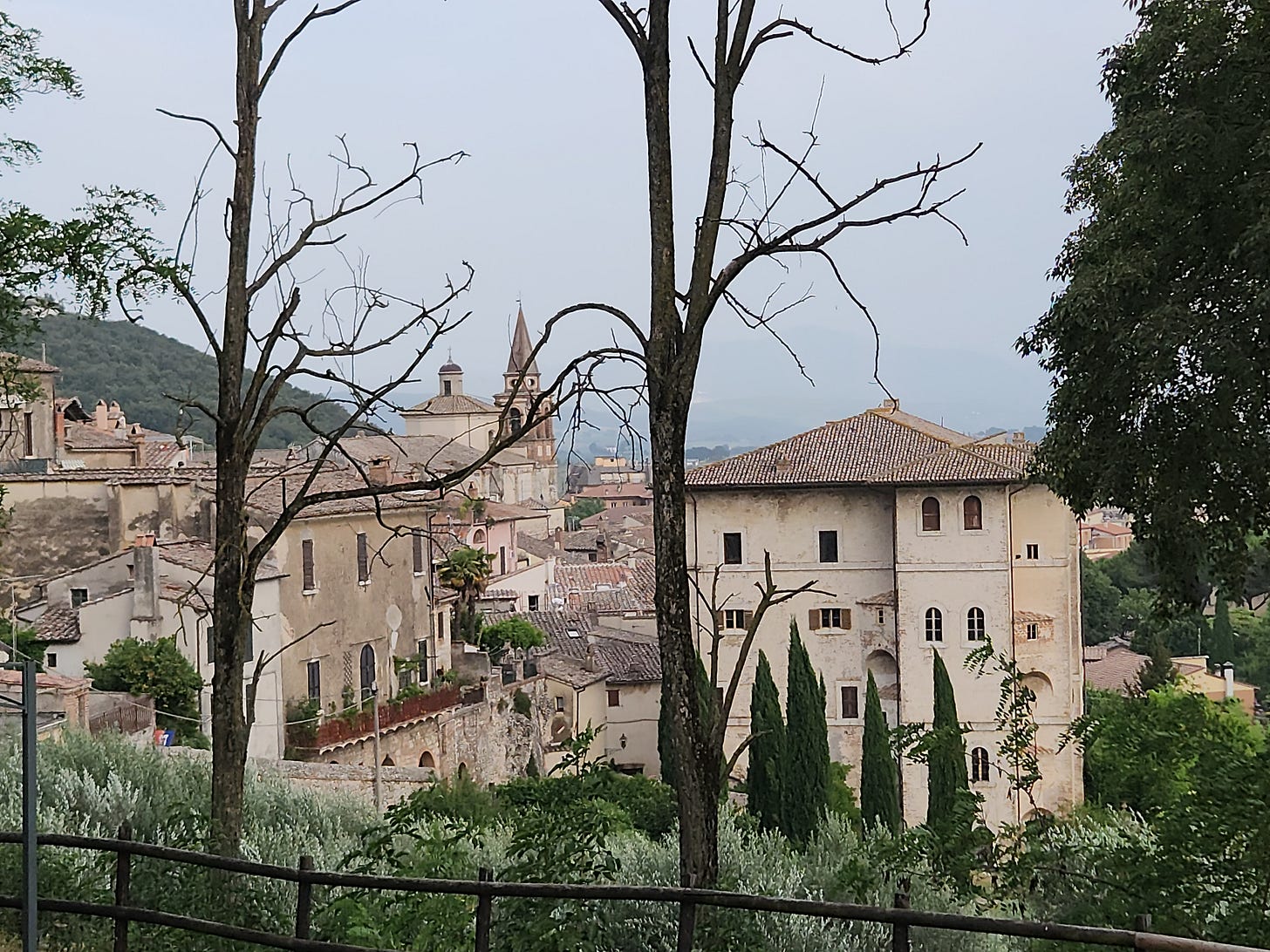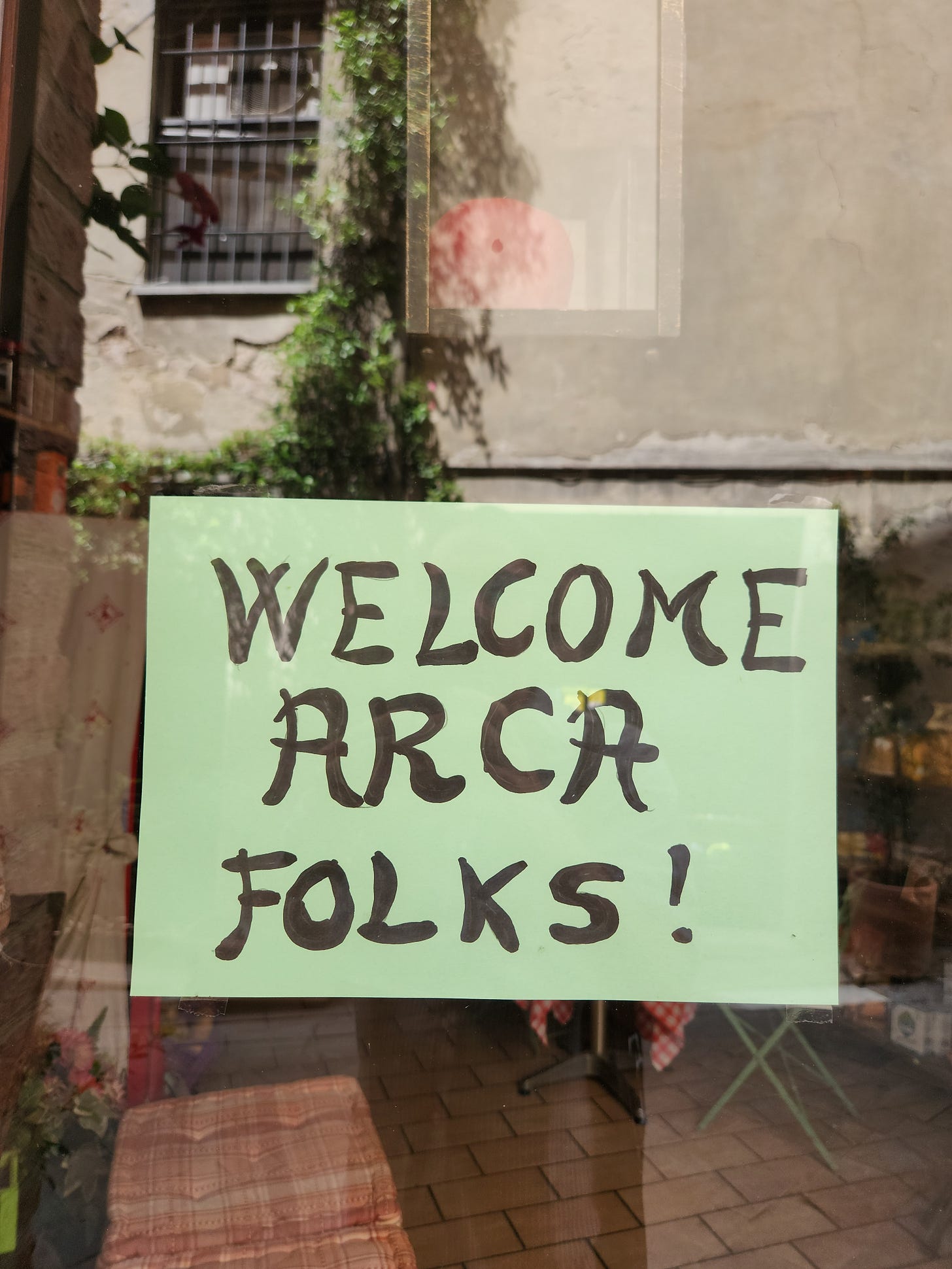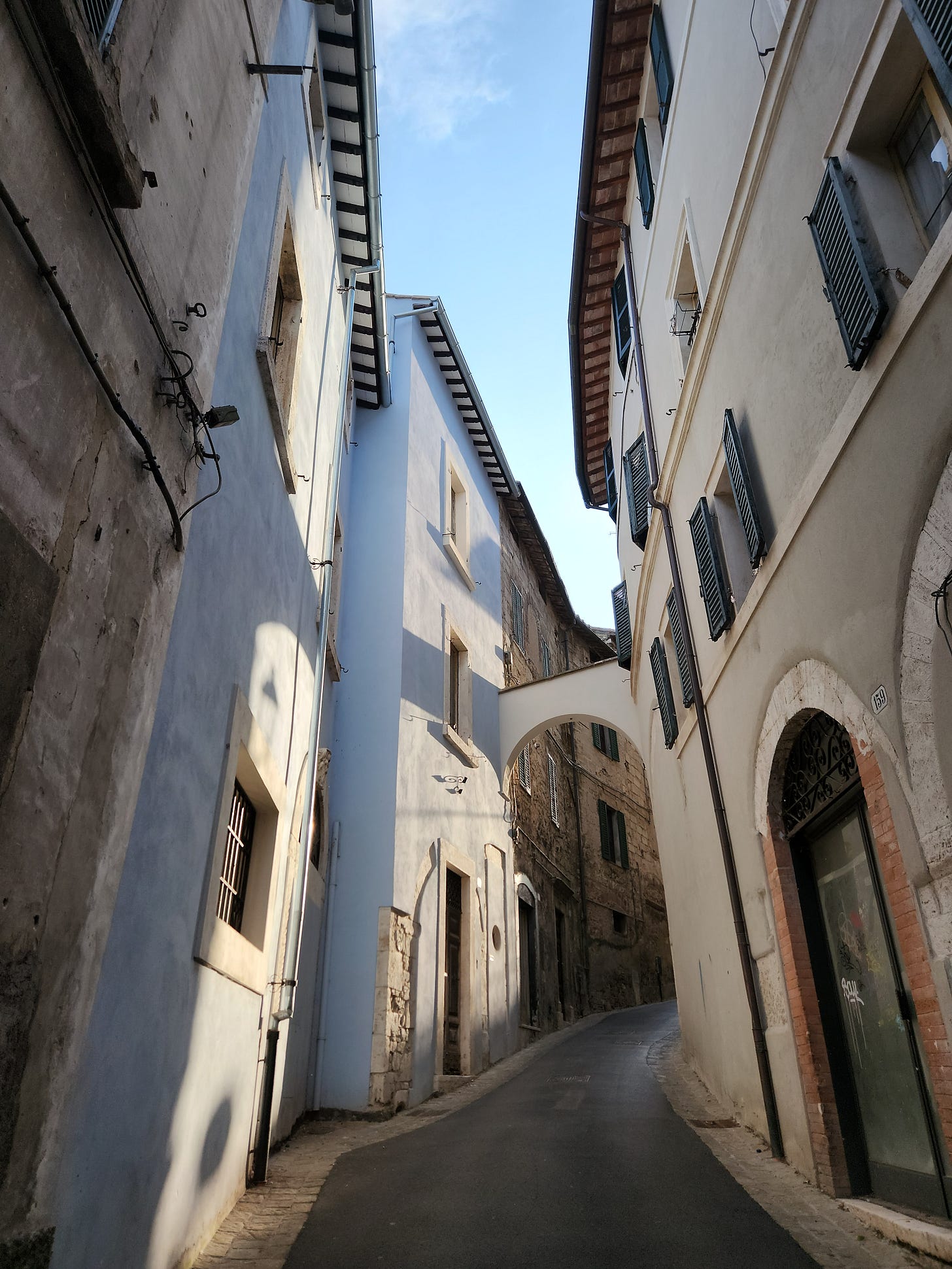Studying Art Crime in the New Year
Applications are open to study art crime in Italy on the world's first such program
Happy new year to all, I hope you had lovely holidays. I’m (very slowly) getting back into the swing of things, which includes checking email for the first time in two weeks. I believe my most-remarked-upon habit is checking email only once a week (over as short a period of time as I can, and usually on Fridays), which has been a great life hack for me. Email is the only aspect of my work that feels like “work” (even when the emails are lovely and good things come with them), so I smush all my bureaucratic stuff into one morning a week and spend the rest of my work time writing, editing, and so on—the fun stuff. A few years back I made the New Year’s resolution to check email only twice a week, and it went well enough that I halved it. So far so good (but that’s why I might not get back to you quickly when you write).
To kick off 2025, I wanted to invite anyone interested to an online “fireside” open house conversation about ARCA, the Association for Research into Crimes against Art. This is the research group I founded back in 2006, when I was still a student, and which became the world’s first research group on art crime. It went on to establish several others firsts: the first peer-reviewed academic journal in the field, The Journal of Art Crime, which comes out twice a year since 2009; the first academic program in the field anywhere, a postgraduate summer program held annually in Amelia, Italy since 2009; and more recently the first dedicated book series on the subject, art crime, which I’m curating in collaboration with the publisher, Bloomsbury/Rowman & Littlefield.
To subscribe to The Journal of Art Crime, just email journal at artcrimeresearch dot org
Applications are now open to study this summer on the ARCA Program. It’s such a lovely experience that, even with my inbuilt bias, I can recommend it heartily to anyone interested in studying art crime. You spend 10 weeks in a beautiful Umbrian hilltop town and we bring the world’s top professors, art police, museum security experts, and more to you, each one teaching an in-depth course. In the midst of it we also run an annual conference on the study of art crime. It’s a chance to dive deeply into a fascinating subject in a lovely place.
If you’re interested in learning more about it, or about ARCA, my colleagues Edgar Tijhuis (ARCA’s Academic Director) and Lynda Albertson (ARCA’s CEO) and I will be available online Wednesday January 8th (tomorrow) at 8pm Euro Central time. You’re welcome to join.
The link to join is is: https://lyndaalbertson-204.my.webex.com/lyndaalbertson-204.my/j.php?MTID=m49752e73c703f03bf122227382ce0fb8
Meeting number: 2867 820 7016
Meeting password: D5PwqpgEs62
In another post I’ll make a very big announcement related to ARCA’s Art Crime book series with Bloomsbury, but for now I’ll leave you with an interview I gave a few days ago about the ARCA Postgraduate Program that has yet to run, so you’re getting an advance look at the full length interview. I’ll throw in some fun photos of Amelia, where the program is held in Italy.
Best wishes and more good things to come in 2025!
Can you tell us something about your background?
I got interested in art crime long ago, when I was a postgraduate student living in London, doing an MA at The Courtauld Institute. I’d always enjoyed writing, and I’d actually gotten into a playwrighting program at Goldsmiths in London. I wasn’t a top student so I was pleasantly surprised when I was accepted at all three postgraduate programs to which I’d applied: Masters programs in art history at The Courtauld Institute and at University of Cambridge, and one in playwrighting at Goldsmiths. I’d enjoyed writing plays as an undergraduate and thought that this might be a career for me. But when I got into all three, I spoke to some professors of mine at my undergraduate, Colby College, and each one independently told me, “Look, you can teach yourself playwrighting by writing and going to a lot of plays in London—but you can’t teach yourself art history.” They also said that I’d be nuts not to go to these prestigious universities that somehow let me in, even though I was a sort of B+ level student. I decided to do just that—I’d give myself a playwrighting immersion just by seeing lots of plays, but I’d go to study art history. Cambridge allowed students to defer a year, but Courtauld didn’t. So I said “yes” to both, doing an MA first at Courtauld, then at Cambridge. There’s no good reason to have two MA degrees, but I wanted to be a student for as long as possible because I so enjoyed it. At that point, however, I didn’t know anything about art crime.
During my year in London at the Courtauld, I was influenced by three things. I’d already had quite a bit of experience behind the scenes in the art world. I’d worked two summers at Christie’s auction house, so I had a sense of the trade side. I’d worked one summer at the Yale British Arts Center, so I had a taste of museums. And now I was in academia. I’d always enjoyed writing and thought that the art world would be a good setting for a novel. I say novel because I’d managed to get myself a playwrighting agent in London, but she said, “If you actually want to make a living as a writer, you’re much better off writing a novel. Have you got one?” “No,” I replied, “but I’ll go write one.”
This was when The Da Vinci Code was published and the Pierce Brosnan remake of The Thomas Crown Affair was released. I enjoyed reading The Da Vinci Code but like anyone who knows enough about history, I found elements of it annoying—it is full of errors, as if no one bothered to fact-check it, and is misleading in the way it’s written, making millions of readers think conspiracy theories are true. I wanted to write something with a similar pace and engagement to it, but with all correct information and research. I was also hoping for similar sales, but that was always going to be a long shot! I so enjoyed The Thomas Crown Affair—it was so stylish, classy, and with only one “deus ex machina” that isn’t explained and plausible on repeat viewings, it was “honest” in its many twists. So my inspiration was basically to write something that would a) be set behind the scenes in the art world, b) based on proper research and plausibility, c) borrowing some of The Da Vinci Code’s winning format, like A/B/A/B storylines and ending chapters with cliffhangers, and d) with the style and art crime elements of The Thomas Crown Affair.
The result was my first (and only published) novel, The Art Thief. I was very lucky in that it sold for a big advance and was a best-seller in five countries, allowing me to become a full-time writer.
And how did you get involved with ARCA?
While researching for The Art Thief, I quickly realized that there was essentially no established field of the study of art crime. I quickly read all the books I could find—there were a few dozen only. There was no professor anywhere who specialized in the subject. If it hadn’t been such a tabula rasa, then I might not have gone into it. But I was excited at the idea that it was so little-plowed, making it feel that anything I did could immediately have an impact. I also liked that everyone found it interesting—it wasn’t just for academics. True crime interests everyone, while art is a more specialized audience. If you combine true crime with art you hit exactly what I most enjoyed. I started a PhD in the history of art theft at Cambridge, with an advisor who was nice and supportive but knew nothing about the subject.
While at Cambridge I organized a conference with the help of a university institution with the odd acronym CRASSH that turned out to be the first conference on art crime in the world that brought together police and the relatively few academics who had published on the subject. Representatives from the FBI, Scotland Yard, the Hong Kong Police, and the Carabinieri came. Again I got very lucky, and the conference was covered by Tom Mueller, a journalist who then published a big feature article in The New York Times Magazine (“To Sketch a Thief,” Dec 2006) about the conference and about me as having effectively founded this new field of study, all before I’d even finished my PhD. This was before social media was widespread and a feature in the Times was then worth much more than it is now, because there were fewer distractions, and it was the news source of record. Overnight I got “famous” to the extent that one can without being properly famous—it was a version of the “15 minutes of fame” but it endured among those interested in the subject longer than that. I was quickly seen as the leading expert in the field, even though I was only 26—it was more by default, because no one else had looked deeply at the subject before.
There was great enthusiasm after the conference, especially from participants, who offered to be founding trustees of ARCA. I wasn’t sure how to best use this wave of publicity but it seemed like a good plan to established a non-profit organization that would promote the study of art crime and act as a bridge between the relatively few people in the world who studied it or worked within related fields like law enforcement or museum security. There were probably a few dozen specialists worldwide at the time, and so it was easy to be in touch with all of them. It’s not like today, where there are various universities with art crime courses and even specialized professors. This was the “olden days.” So I set up ARCA, first in the US then in Italy, where I later lived.
In 2009, we were in The New York Times again as we’d set up this very unusually formatted postgraduate program, which continues to this day. Instead of having fulltime staff, we invite top teachers (from academia and professional spheres, like police) to teach concise courses (2.5 days or 5 days long) in a beautiful town in Italy and have students come for the summer. The Times piece was written in the middle of the very first summer of the program, so its tone is “this seems interesting, but we’ll see.” It still is interesting, now fifteen years on!
That same year we launched The Journal of Art Crime, the first peer-reviewed academic journal in the field, which is still published twice-yearly. And we held the first annual conference on the study of art crime, again something new, in the midst of the summer-long postgraduate program, to bring all manner of speakers to our students.
ARCA certainly played a role in establishing the field of art crime and many other programs inspired by ours have popped up. Our graduates are professors and security directors and investigators. It’s very gratifying. What began as a homemade operation—initially just me and my wife helping out—has grown and blossomed, particularly thanks to Lynda Albertson as CEO and Edgar Tijhuis as Academic Director. I honestly found the running of ARCA to be stressful and I don’t think I was very good at it, so I’m hugely grateful to them for taking the reins, being so passionate, and allowing me to become more of a figurehead and guest professor than someone handling things on a daily basis.
ARCA has since expanded into different fields—team members appear in documentaries and TV programs (for Amazon Prime, the BBC, and beyond), we’ve fronted influencer campaigns for Samsung, we’ve helped with active investigations, and recently we joined forces with the publishing giant Bloomsbury/Rowman & Littlefield, to launch the first dedicated book series on art crime.
What is the purpose of the course you are teaching this summer?
Many years back I taught whatever was needed and not covered by other visiting faculty, but in recent years I’ve taught a concise course on art forgery. This is a subject of one of my books, The Art of Forgery (2015) and I’m preparing a new edition of it to come out in late 2025 with Bloomsbury. It’s fascinating and full of kooky characters and surprising stories. I was the first to place to a criminological theoretical superstructure on what was before an anecdotal field of study—there had been books and articles telling the stories of individual forgers, but there had not been an attempt to put art forgery into a broader context and look for themes and consistencies in modus operandi. The most practical thing I came up with I called “the provenance trap,” and I teach on the five variations of it, each with a really fun case study. In each the over-focus on provenance on the part of the art world has allowed clever criminals to take advantage by laying traps based on provenance research, tricking art experts into authenticating forgeries.
What is it like in Amelia?
Amelia is an idyllic Umbrian hilltop town. We chose it to house our program because I was developing the idea for the program back when I was teaching at Yale University—I taught a seminar on art crime there even before I’d finished my PhD (which I actually finished at University of Ljubljana, in architectural history—fun fact—because I’d met my future wife, who is Slovenian, and decided to move there). Yale used to have their Italian language study abroad program in Amelia, but were about to move it to Siena. Amelia was looking for a prestigious academic program to replace the Yale program and move into the same facilities. We were just starting, so hardly prestigious, but it worked perfectly for us and for them. Amelia is small enough that some twenty students plus ten professors spending a summer there provides a significant positive economic boost and brings a liveliness to town. It’s spectacular, ancient, charming, and many of our students feel “adopted” by locals and come back annually after our program to visit. It’s within easy reach of Rome but is quite inexpensive as a place to live, which is great for our students, and it is not very touristy, which means you get a nice immersion into true Italian life. We’re not the only ones to have discovered it. The mega-best-selling author Daniel Silva (whose fictional protagonist is an assassin and art restorer) used to summer here and a scene in one of his novels is set at the gelateria just outside the town gates.
What is so special about this program?
The program was unique and groundbreaking when it first started, and it inspired other programs to use our unusual formula. Ours is the most comprehensive interdisciplinary program in art crime. It’s the godfather of them all. And it combines classroom teaching with living in a beautiful Umbrian town, plus we arrange amazing field trips—students do a security evaluation with their museum security professor at one of Rome’s major museums, and they explore raided Etruscan tombs in the countryside with the head of Italy’s Archaeological Group. Cool stuff.
Any advice for the participants that come to Amelia?
Just go for it. It will be one of the best summers of your life, academically and in terms of a wonderful, enriching abroad experience. Plus—cappuccinos!



